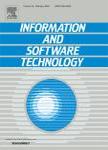版权所有:内蒙古大学图书馆 技术提供:维普资讯• 智图
内蒙古自治区呼和浩特市赛罕区大学西街235号 邮编: 010021

作者机构:Korea Adv Inst Sci & Technol Sch Comp Daejeon South Korea Chalmers Univ Technol Dept Comp Sci & Engn Gothenburg Sweden
出 版 物:《INFORMATION AND SOFTWARE TECHNOLOGY》 (信息与软件技术)
年 卷 期:2023年第162卷第1期
核心收录:
学科分类:08[工学] 0835[工学-软件工程] 0812[工学-计算机科学与技术(可授工学、理学学位)]
基 金:National Research Foundation of Korea (NRF) Grant [NRF-2020R1A2C1013629] Institute for Information amp communications Technology Promotion grant - Korean government (MSIT) [2021-0-01001] Samsung Electronics [IO201210-07969-01] Swedish Scientific Council [2015-04913, 2020-05272] Swedish Research Council [2020-05272, 2015-04913] Funding Source: Swedish Research Council
主 题:Mutation testing Fault localisation
摘 要:Context: Automated fault localisation aims to assist developers in the task of identifying the root cause of the fault by narrowing down the space of likely fault locations. Simulating variants of the faulty program called mutants, several Mutation Based Fault Localisation (MBFL) techniques have been proposed to automatically locate faults. Despite their success, existing MBFL techniques suffer from the cost of performing mutation analysis after the fault is observed. Method: To overcome this shortcoming, we propose a new MBFL technique named SIMFL (Statistical Inference for Mutation-based Fault Localisation). SIMFL localises faults based on the past results of mutation analysis that has been done on the earlier version in the project history, allowing developers to make predictions on the location of incoming faults in a just-in-time manner. Using several statistical inference methods, SIMFL models the relationship between test results of the mutants and their locations, and subsequently infers the location of the current faults. Results: The empirical study on Defects4J dataset shows that SIMFL can localise 113 faults on the first rank out of 224 faults, outperforming other MBFL techniques. Even when SIMFL is trained on the predicted kill matrix, SIMFL can still localise 95 faults on the first rank out of 194 faults. Moreover, removing redundant mutants significantly improves the localisation accuracy of SIMFL by the number of faults localised at the first rank up to 51. Conclusion: This paper proposes a new MBFL technique called SIMFL, which exploits ahead-of-time mutation analysis to localise current faults. SIMFL is not only cost-effective, as it does not need a mutation analysis after the fault is observed, but also capable of localising faults accurately.